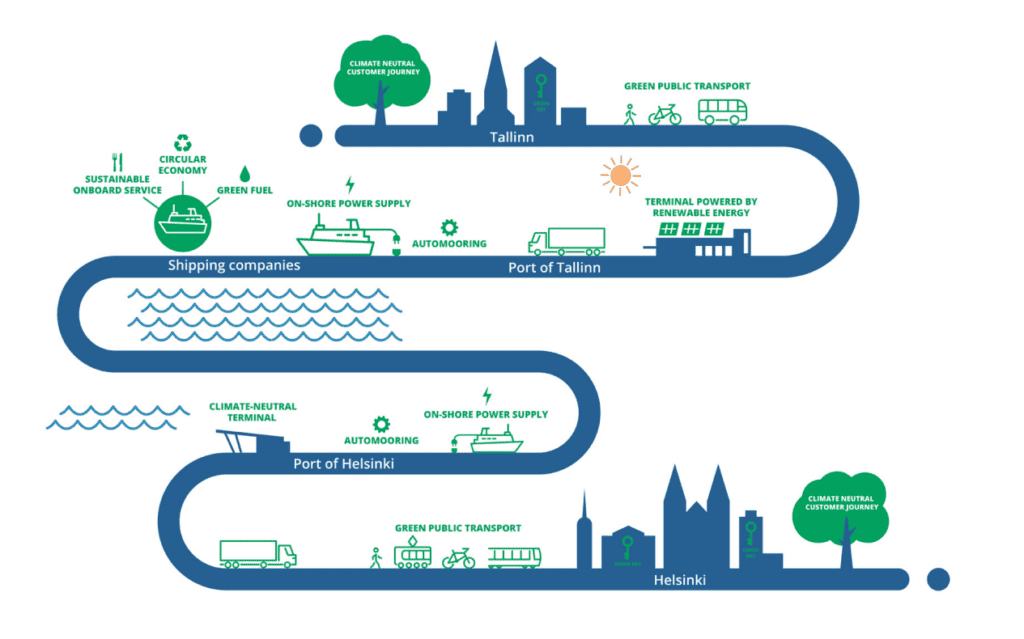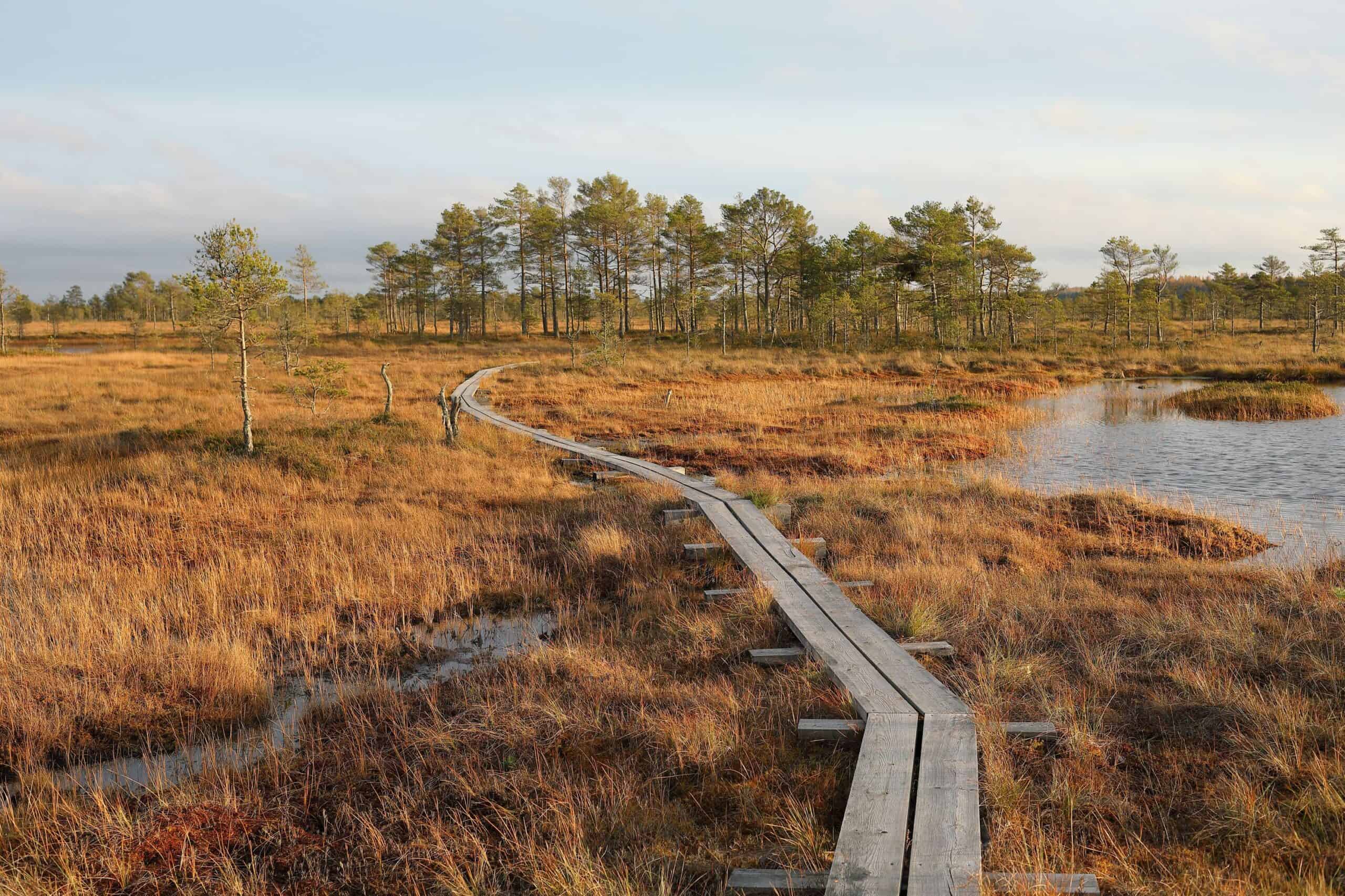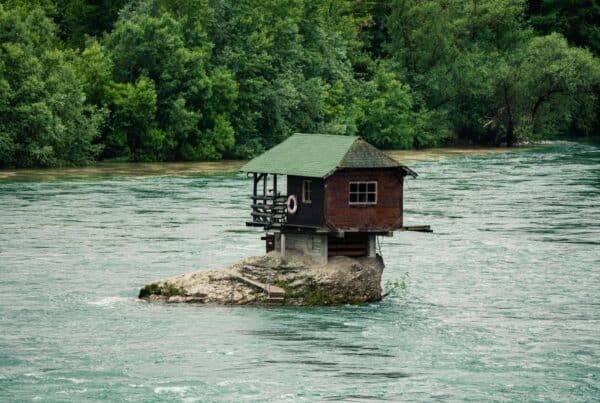You can read our article on Tallin Smart City here.
Climate change, sustainable development, and environmental awareness have increasingly dominated global discourse. Innovations in technology and novel business models are seen as pivotal means to address these issues. Understanding the multifaceted challenges and opportunities of green entrepreneurship is essential in driving sustainable development.
Businesses in Estonia generally perceive the green transition as a challenging journey, primarily due to financial barriers, lack of comprehensive policy support, regulatory uncertainties, and limited consumer demand.[1] The transition is often seen as a costly endeavour, driven by political decisions rather than market forces. The pressure to adapt comes predominantly from political spheres, leaving companies apprehensive about the financial implications and operational changes required.
However, alongside the challenges are opportunities that some forward-thinking companies are beginning to recognize. Innovations in green technology, favourable taxation of green products, and increasing production efficiency are among the benefits that can be leveraged. Yet, these opportunities are often overshadowed by concerns over losing competitive advantage, coping with ongoing crises such as COVID-19 and energy price hikes, and the need for long-term investment and planning.[2]
The twin transition emphasizes the need for a synergistic approach to digital and green transformations. When companies view the transition as a chance to launch new products or collaborate more closely with scientific and industrial fields, they are more likely to perceive these changes as opportunities. This convergence is not just about adopting new technologies but also about reshaping business models to be more sustainable and efficient.[3]
The integration of sustainability into business processes is being increasingly realized through technological innovation. Companies worldwide are adopting renewable energy, enhancing energy efficiency, and investing in technologies like carbon capture and storage to mitigate climate change. The push towards electric vehicles, battery storage, green buildings, and circular economy principles exemplifies the incorporation of advanced technologies to reduce environmental impact. Additionally, sectors such as agriculture are leveraging digital technologies to optimize processes and reduce waste.
Europe’s Green and Digital Transition
The European Union’s commitment to becoming a carbon-neutral continent by 2050 is embodied in the “Green Transition.” This ambitious plan involves increasing renewable energy usage, reducing greenhouse gas emissions, and promoting sustainable transportation and agriculture. The “twin transition” in Europe refers to this green transition coupled with a shift towards a digital economy, utilizing new technologies to boost competitiveness and create jobs.
The EU’s initiatives, like the European Green Deal and Digital Single Market, are geared towards fostering this twin transition. Recognizing the interdependency of digital and green transitions, the EU is focusing on generating growth, employment, and environmental protection simultaneously.
The impact of the twin transition varies significantly across Europe, influenced by regional socio-economic and territorial characteristics. Metropolitan regions with a stronghold in knowledge-intensive services are better positioned to capitalize on these changes. Conversely, agricultural or less economically developed regions face more challenges adapting to the structural changes brought by the twin transition. High-tech regions show more substantial overall growth potential, while carbon-intensive regions might struggle to keep pace.[4]
Nordic–Baltic Green Transition Trends
The Nordic–Baltic region, with Estonia as a participating country, is characterized by increasing interconnectedness in energy systems, political landscapes, and various sectors, all converging towards a green transition. The Nordic Council of Ministers has envisioned a “digital green transition” for the region, integrating renewable energy and progressive climate policies.[5] Countries like Finland, Norway, and Denmark are implementing robust policies using digital technologies to facilitate the green transition. The approach emphasizes the active role of state actors, technology, and industry collaboration to achieve sustainable economic growth.
The 2022 military incursion by Russia into Ukraine underscored the critical need for diversification in energy sources, as articulated by Kristi Klaas, the Deputy Secretary-General for Green Transition at Estonia’s Ministry of Climate.[6] This geopolitical event has expedited Estonia’s transition to renewable energy, a process that was already in progress.
Under the leadership of Prime Minister Kaja Kallas, Estonia made official commitments to cease oil shale production by 2040 and achieve 100% renewable electricity generation by 2030. Notably, the latter goal positions Estonia as a leader in renewable energy commitment amongst Central and Eastern European nations.
Finno-Estonian maritime partnership: the Green Corridor Agreement
A collaborative framework involving a consortium of port authorities, governmental ministries, and maritime corporations in Finland and Estonia has been established to develop a green corridor between Helsinki and Tallinn. This initiative aims to enhance the environmental sustainability of maritime transport between these two capital cities.[7]
Valdo Kalm, the Chief Executive Officer of the Port of Tallinn, emphasized the necessity of surpassing regulatory requirements to augment the environmental sustainability of the Helsinki-Tallinn connection. The consortium includes metropolitan entities, shipping enterprises such as AB Eckerö, Tallink Grupp, and Viking Line, along with the Estonian Ministry of Climate, supported by the Finnish Ministry of Transport and Communications.
The agreement outlines the creation of comprehensive roadmaps for shipping companies, municipal authorities, and port administrations, alongside other stakeholders, to facilitate the transition towards net-zero carbon emissions. These roadmaps will articulate specific benchmarks and potential funding mechanisms to guide and expedite the sustainability efforts, as per the joint press release.
Ville Haapasaari, the Chief Executive Officer of the Port of Helsinki, expressed optimism in discovering innovative and efficacious methods to address climate change within this sector:[8] “We look forward to the co-operation this project offers between all parties. I’m convinced that we can find smart and better solutions of tackling the climate change in this area of ours and to ensure the future growth and welfare of two countries.”
While the preliminary agreement does not delineate explicit measures required to mitigate the climate impact, it aligns with the broader objective set by the International Maritime Organization (IMO) under the United Nations to achieve zero emissions in the shipping industry by approximately 2050. The exact alignment of this goal with the green corridor initiative between Tallinn and Helsinki remains to be clarified.

Estonia’s Digital and Green Leadership
In 2023, Tallinn earns the title of European Green Capital, distinguishing itself through a dedication to biodiversity, sustainable governance, and eco-innovation. This recognition not only underscores its rich historical charm but also its prominence as a centre for technological advancement and sustainability.
As we have already pointed out, Tallin is a thriving smart hub: its developing IT sector, including several startups valued at over $1 billion, known as “Estonian unicorns,” like Bolt, demonstrate its status as a Green Innovation Hub.[9] The city’s Greentech Week in November further emphasizes its commitment to eco-innovation, attracting international experts and visionaries in sustainable technology.
Tallinn’s Green Tracks programme and other innovative projects like the transformation of the Town Hall Square into a pop-up park exemplify its dedication to greening urban spaces. Contributions from the Estonian Academy of Arts students add climate-sensitive art to the cityscape, further enhancing its commitment to a sustainable future.
Tallinn’s tenure as European Green Capital is more than an accolade; it’s a testament to its enduring commitment to a sustainable, innovative future. The city sets a benchmark for integrating urban development with environmental consciousness, inspiring global cities to follow in its green footsteps.
Test in Tallin initiative
The “Test it in Tallinn” initiative reflects the city’s ambition in sustainable mobility and energy efficiency, inviting companies to trial smart solutions.[10] Collaboration is key to Tallinn’s approach, with various partnerships enhancing sustainability in urban life. The city’s rich biodiversity, including expansive protected areas, showcases its commitment to preserving nature amidst urban development.
Out of seven applications that advanced to the third stage of the Test in Tallinn contest, four were selected in September 2023 for further development, anticipating entry into the testing phase shortly.[11] Notably, all approved applications were from foreign companies, reflecting Tallinn’s international collaboration in innovation:
1. Urbanly from Argentina: This company offers software designed for urban planners to simulate various scenarios considering service availability, real estate pricing, and other influential factors. Urbanly intends to refine its models and gather feedback by applying its software to Tallinn’s base data in collaboration with the city’s planners.
2. Sam Corporation from South Korea: This innovative enterprise has developed a game aimed at enhancing creativity and speech skills among the youth. The corporation plans to refine and expand its product through a partnership with Tallinn.
3. XD Visuals from Finland: Specializing in software that merges planned and existing environments into a comprehensive 6D hybrid information model, XD Visuals seeks to employ Tallinn’s foundational data to understand and enhance its product’s capabilities.
4. MakeaBIM from Finland: This company has developed AI-driven software that generates Building Information Modeling (BIM) models from 2D sketches. MakeaBIM is looking forward to testing its technology with sketches from various buildings owned by the City of Tallinn.
These collaborations underscore Tallinn’s commitment to fostering an innovative ecosystem and leveraging international expertise to enhance urban planning and development. Half of the companies are Finnish, signalling again the close relations between the two countries on smart initiatives.
Green tourism: a promising sector in Estonia
Estonia is emerging as a leading destination for sustainable travel, offering an array of eco-conscious experiences for travellers. Its easy accessibility from major European cities and a deliberate push towards sustainable tourism make it a hidden gem for those mindful of their environmental impact. Here’s a short overview of what makes Estonia an attractive destination for green tourism:
1. Wild Nature and Bogs: Estonia boasts some of Europe’s wildest nature, especially its ancient bogs, offering a range of low-impact activities like hiking, kayaking, and swimming. The bogs, central to Estonia’s folklore, provide a unique landscape for nature lovers and adventurers alike.
2. Tallinn’s Green Initiatives: As the capital city, Tallinn is recognized for its commitment to sustainability, earning the title of European Green Capital in 2023. With initiatives like free public transportation for residents and a calendar full of green events, the city offers a blend of historical charm and forward-thinking environmental practices.
3. Farm-to-Table Culinary Scene: Estonia’s culinary world emphasizes local produce and sustainability, with restaurants committed to high ethical and environmental standards. The country’s focus on eating local is exemplified by its Michelin Green Star restaurants, showcasing seasonal menus and zero-waste philosophies.
4. Eco-Friendly Accommodations: From free campsites funded by the Estonian Forest Ministry to luxurious nature-friendly accommodations, Estonia offers a range of sustainable lodging options. Travelers can enjoy the great outdoors with minimal environmental footprint or indulge in comfort close to nature with eco-label certified accommodations.

Lake Paidra, Estonia
Conclusion
The transition towards a sustainable Europe is seen not just as an environmental imperative but also as a source of business opportunities and local employment. For Estonia, with its robust technology sector and highly developed digital infrastructure, the twin transition offers a unique chance to advance its economic and environmental goals simultaneously. However, realizing these benefits requires a collective effort from companies, policymakers, and society at large.
For companies, this means preparing for financial challenges, investing in knowledge and innovation, and focusing on green innovation. Policymakers are called upon to provide clearer, more consistent support and incentives for adopting green technologies and practices. They also need to ensure that the transition is balanced with tangible market opportunities and not just regulatory pressures. For society, raising awareness about the benefits of the green transition and supporting sustainable practices is crucial. This collective effort can drive demand for sustainable products and services, ensuring that the green transition is a shared, beneficial journey for all.
As Estonia and other nations navigate the green transition, the path is marked by both significant challenges and promising opportunities. By embracing innovation, fostering collaboration, and committing to long-term sustainable practices, the journey towards a green and digital future can lead to a more resilient and prosperous society.
Sources
-
https://www.mdpi.com/2071-1050/15/5/4172#B5-sustainability-15-04172 ↑
-
https://link.springer.com/article/10.1007/s10640-022-00741-7 ↑
-
https://sciendo.com/article/10.2478/ie-2023-0010 ↑
-
https://www.econstor.eu/handle/10419/278490 ↑
-
https://norden.diva-portal.org/smash/get/diva2:1596448/FULLTEXT01.pdf ↑
-
https://www.euronews.com/green/2023/09/30/baltic-sea-wind-and-a-brand-new-climate-law-heres-why-estonia-is-our-green-country-of-the- ↑
-
https://www.smartcitiesworld.net/sea-travel/helsinki-and-tallinn-ports-enter-green-corridor-agreement-9444 ↑
-
https://bunkermarket.com/helsinki-and-tallinn-ports-unite-for-maritime-green-corridor/ ↑
-
https://incorporate.ee/business-environment/estonia-a-green-and-cleantech-paradise/ ↑
-
https://www.tallinn.ee/en/tallinnovation/testintallinn ↑
-
https://www.tallinn.ee/en/tallinnovation/news/new-test-tallinn-projects-were-approved-innovation-committee ↑





